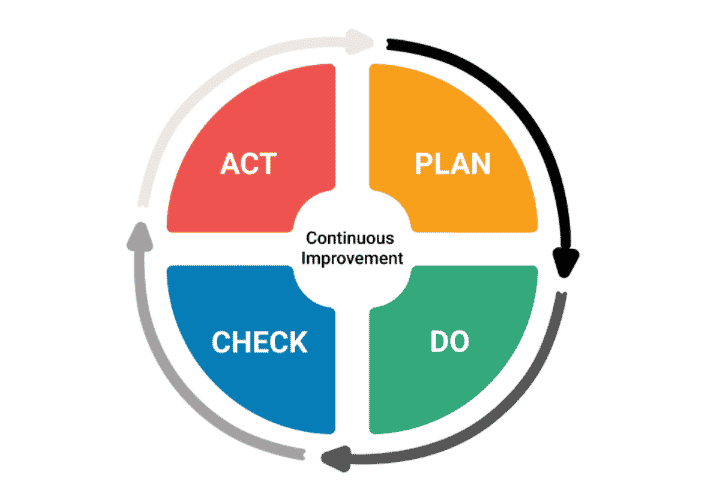Quality management activities must follow scientific working procedures. One of the most philosophical methods in quality management is the PDCA cycle. PDCA cycle should be implemented for large processes such as system establishment and small processes such as dimensional inspection. Every cycle, the product quality, process quality or system quality will be promoted and improved once.

What is PDCA Cycle in Quality Management?
PDCA is the four stages of quality management: Plan-Do-Check-Act. Each thing should be planned first, implemented after the plan is completed, checked during the implementation process, and then improved, implemented, and improved after the inspection results. In this way, the problems that have not been improved are put into the next cycle, forming a PDCA cycle.
PDCA Cycle Stages & Phases
Phase 1: Plan
Before the production of products, make a comprehensive plan for various standard procedures (SOPs), process specifications, responsible units, and inspection methods. The four aspects of PDCA that can avoid problems are planning, because when planning, we think about what may happen, what may not happen, and how to avoid problems if they happen, so planning is important.
Phase 2: Do
Carry out all work accurately according to the previous planning.
Phase 3: Check
During the implementation, the achievement rate must be checked at any time. If it is found that there is a gap between the plan and the actual implementation (do), it is necessary to put forward improvement measures at any time. What we find when a problem just happens is check, which allows us to find when the problem just happens and is not obvious. Therefore, planning and inspection are important.
Phase 4: Act
According to the improvement measures proposed in the third step of the check, the practice shall be revised again, and corrective measures shall be implemented correctly, so as to make the future work direction more and more progress.
Deming believes that the above steps are a dynamic process of continuous circulation. As long as the enterprise repeats steps 1 to 4, it can continue to learn and reflect from mistakes, and grow from reflection! If enterprises do implement the PDCA cycle, they will be able to experience unprecedented huge benefits. Especially in the Internet age, the life cycle of products is getting shorter and shorter. How to respond to the treacherous market changes and improve the production and quality management methods at any time has become the most important issue for managers.
Characteristics of PDCA cycle
- Cycle
The four processes of the PDCA cycle are not completed by running once but are carried out repeatedly. When a cycle ends and some problems are solved, there may still be problems unsolved, or new problems appear, then the next PDCA cycle will be carried out, and so on. - Large rings combine small rings
Similar to the planetary gear train, the relationship between the overall operating system of a company or organization and its internal subsystems is an organic logical combination of large rings with small rings. - Step up
PDCA cycle is not a cycle that stays at the same level. The process of continuously solving problems is a process of gradually raising the level. - Statistical tools
PDCA cycle applies scientific statistical concepts and processing methods. As an effective tool to promote work, find and solve problems.